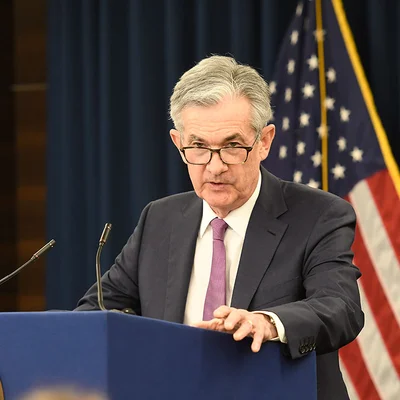

Review of 2017: All sorts of volatility, bar one
Markets were oddly calm this year, while everything else was in motion
Volatility could be found pretty much everywhere in 2017, except in the markets: business models, IT, recruitment needs and rulebooks all changed sharply.
With trading opportunities muted in many flow and macro businesses, dealers looked to make money elsewhere – it was the strand linking such apparently diverse decisions as UBS’s return to corporate bond trading and Deutsche Bank’s drive to make proprietary technology available to its foreign exchange clients.
Across the risk management and risk transfer space, firms started exploring a trio of potentially transformative new technologies – big data, distributed ledgers and machine learning. Risk managers on the sell- and buy-side have different degrees of freedom here, with bank supervisors already urging restraint about the use of machine learning in certain contexts.
In regulation, the final months of the year brought a long-awaited final package of changes to Basel III, but this hard-won consensus was undercut by a new focus on national priorities – a changed agenda and role for the US, the confusion wrought by the UK’s vote to leave the European Union, and a decision to leave some of the toughest calls in Basel III to individual regulators.
Here, we look back at some of the year’s biggest Risk.net stories, and those with greatest potential to shape the coming 12 months.
IMMUNE TO RISK

Tallying the scores at the start of November, the Vix index of US equity volatility had closed above 16 points just once this year and below 10 points on 32 occasions – having never breached that level in the previous 11 years. Its average closing level of 11.24 was the lowest recorded since at least 2003.
For those positioning for a break in the calm, it was a frustrating experience. By the second quarter, some market participants were already changing strategy, switching to one- and two-week options contracts where the value is more dependent on gamma – the rate of change in an option’s delta – than vega.
Short-volatility trades, by contrast, have been hugely successful and wildly popular. Exchange-traded products (ETPs) that short the Vix were criticised for exposing retail investors to the dangers of a squeeze should volatility spike. Seven days after Risk.net wrote about the products, the Vix leapt to its high for the year, and the market had a chance to witness the consequences; ETP rebalancing contributed to record volumes in Vix futures contracts, but the spike was short-lived.
The episode helped illustrate a theory that gained currency as the year wore on. Yield-hungry investors had become immune to risk; when markets dipped, it was seen as a chance to buy, not a reason to get out.
Speaking to Risk as part of a series of 30th-anniversary interviews, the chief risk officer of JPMorgan Chase warned about the outcome when this behaviour does eventually end – markets could swing to the other extreme.
“People are putting on hedges and they’re just bleeding away … There is hedging fatigue” – Christopher Cole, Artemis Capital Management (Volatility hedgers turn to gamma trades to stem slow ‘bleed’, June 12)
“We have seen scenarios where some products have lost more than 15% where the market only lost 2%” – Vincent Denoiseux, Deutsche Asset Management (Complex short Vix products draw fire as vol plumbs lows, August 3)
“We estimate that the levered and inverse Vix ETPs bought over $50 million vega into the close as part of their daily leverage reset. This is a lot of volatility” – Nitin Saksena, Bank of America Merrill Lynch (Vega volumes triple on Vix spike, August 15)
“Perhaps we end up in more of a bimodal situation where in good times things are especially stable and less volatile, and in bad times they may be far more unpredictable and volatile than we have seen in the past” – Ashley Bacon, JPMorgan Chase (JP Morgan’s CRO on the bank’s six buckets of risk, November 17)
WHERE BANKS GO WHEN MARKETS STOP MOVING

Banks have been trying to protect their market-making businesses against the low-volatility environment in various ways. As one example, UBS has been ramping up its corporate bond business, which does better when investors are looking for yield – as George Athanasopoulos, the bank’s global head of foreign exchange, rates and credit, told us in another of the 30th-anniversary interviews.
Athanasopoulos saw the same motive in other banks’ hopes to grow their corporate customer base – it was all about adding clients that have a need to transact throughout the cycle.
Elsewhere, it was less a matter of recalibrating the client and product mix, and more about getting into entirely new business lines. In January, Risk.net broke the news that JP Morgan was planning to commercialise its front-office risk system, Athena – a move that set tongues wagging. Rival dealers were split on whether the idea made sense, while vendors warned the business of selling software is not as easy as it looks.
Deutsche Bank’s foreign exchange business has also been trying to make its in-house systems pay, by rolling them out to clients. One of the platforms helps customers automate some of the manual steps involved in forex hedging programmes – Deutsche sees it as a way of removing some of the operational risk involved in the process.
“The biggest difficulty in running a high-velocity model is you are effectively running a long-volatility trade” – George Athanasopoulos, UBS (UBS’s Athanasopoulos on volatility, Mifid and hedging by machine, November 6)
“Banks are really data companies; they need to develop a strategy that matches businesses together so they can leverage that data in the way Goldman Sachs and JP Morgan have done” – Kirat Singh, Beacon Platform (JP Morgan to join Goldman in opening up risk system, January 17)
“Clients already have a lot of data, so what they need tomorrow is more than that – access to tools and analytics will be the differentiating factor” – Albert Loo, Societe Generale Corporate & Investment Banking (From swaps to software: rivals eye Goldman and JP tech plans, March 9)
“Our strategy over the last couple of years has been all the more important given the environment we find ourselves in this year, which is to pivot away from pure execution and try to offer a broader range of services” – Jonathan Tinker, Deutsche Bank (Currency derivatives house of the year: Deutsche Bank, December 8)
A DEAL IS DONE IN BASEL …

International regulators have been in broad agreement since 2016 that if banks were given the freedom to model their own capital requirements, then the risk-weighted asset (RWA) total should be subject to a floor set at some percentage of the cruder, standardised approaches. It took almost two years of negotiating to agree on the right level, after the US reportedly started talks at 80% and the Europeans at 70%. On December 7, the compromise figure of 72.5% was announced.
That may look like a win for Europe, but only on the surface. The impact studies accompanying the final package revealed that while global systemically important banks (G-Sibs) as a group could expect a 1.4% average decline in required capital, the effect on individual banks would vary massively – from a 43.4% increase at one, to a drop of 27.8% for another.
By geography, European banks bear the brunt. Of a total €90 billion capital shortfall, 60% is attributable to the region’s G-Sibs, according to one industry group.
The question now hanging over the output floor is a simple one – 72.5% of what, exactly? Technical issues relating to comparisons of modelled and standardised approaches still need to be resolved, so despite months of wrangling over the headline figure, the precise impact is still a moving target.
“Even if you ignore the outliers and just look at the banks in the middle, the seventy-fifth percentile to the twenty-fifth is a 26% spread … That is not as tight a distribution as I would have expected” – a senior European banker (Basel III changes set to create big winners and losers, December 8)
“Look at the SA versus the IRB – the treatment of expected loss and reserves is different. So if we go for an output floor, the role of provisions needs to be treated differently, but this is not [currently] the centre of the debate – the debate is at a higher level at the moment” – a European regulatory source (Basel capital floor faces credit risk eclipse, June 21)
… BUT WHAT HAPPENS NEXT?

Ironically, at the same moment the Basel Committee on Banking Supervision secured agreement on the output floor from its 28 members, it opened the door to divergence elsewhere.
As trailed in a leaked document from May, the committee tackled one of the most controversial elements of its op risk capital overhaul – how to treat exited businesses – by leaving the choice in the hands of national supervisors. The industry sees this as hypocritical: its decade-old op risk models are being scrapped due to a lack of comparability.
Something similar is happening with the net stable funding ratio (NSFR) – one of Basel’s two new liquidity ratios – where a 20% funding add-on for derivatives liabilities is set for review. In the meantime, national supervisors can cut the add-on to just 5% if they see fit. Industry critics have long contested the 20% figure, and are no fans of a scheme in which the burden becomes a matter of national discretion.
The official start date for the Fundamental Review of the Trading Book has been pushed back three years to 2022 – recognising the fact that important components of the new market risk capital regime are being revisited and that many countries have paused their implementation efforts in the meantime.
Europe is further along. Its co-legislators are already discussing and amending proposals issued last year by the European Commission, and it’s not clear they will sit on their hands while the FRTB is refreshed – the European Parliament has put forward its own solution to the lack of a clearly defined profit-and-loss attribution test at the Basel level, which again would leave a key decision with national regulators.
“If you come up with a framework that moves away from comparability by allowing national discretion you will be left with the exact same problem you have right now – which is huge jurisdictional differences” – Evan Sekeris, Oliver Wyman (Revised SMA could allow banks to ignore past op risk losses, June 16)
“The Basel Committee has decided this wasn’t the proper calibration, so they are switching it to 5% – again, with no rhyme or reason; no discussion as to their analysis behind either the 20% or the 5%. That is concerning to us” – Alison Touhey, American Bankers Association (Basel concession strengthens US opposition to NSFR, November 27)
“We are concerned that the US will not implement this but that Europe will” – regulatory strategist at a large European bank (Doubts grow over US FRTB implementation, March 22)
“Automatic failure tends to be painful” – senior regulatory strategist at a European investment bank (Basel delay does not ensure global FRTB consistency, December 18)
VOLCKER AND US DEREGULATION

In early January 2010, Don Lamson – a long-serving regulatory lawyer who was on secondment to the US Department of the Treasury – was abruptly told to skip lunch, and instead spend a few hours throwing together some legislative text.
The aim was to draft a ban on proprietary trading by banks, and the sudden urgency was a result of signs that Martha Coakley, the Democratic candidate for a Massachusetts senate seat, was heading for defeat at the hands of Republican Scott Brown.
The idea of a prop trading ban had been floated a year earlier by former Federal Reserve chairman Paul Volcker but had failed to find a champion. Everything changed as Democrats confronted the loss of their filibuster-proof supermajority in the Senate – it meant legislative support from the left wing of the party would be needed, and a ban on prop trading suddenly became politically expedient.
Risk.net’s Peter Madigan told this story for the first time in April this year – a fitting swan-song for his 13-year career with the publication.
The origins of what came to be known as the Volcker rule were newly relevant at the time because it was seen as a likely casualty of the new US administration’s supposed deregulatory agenda, due to be laid out in the form of advice from the Treasury department. When the first instalment of that advice arrived in June, it took an unexpectedly reserved approach – recommending 102 surgical cuts to US prudential regulation, rather than lopping off entire limbs.
“The instructions were very clear: come up with a complete separation of commercial banking and proprietary trading. I was shocked and asked him when he needed it by. He said by 3pm” – Don Lamson, retired lawyer (Critical Mass: why US Treasury swallowed unloved Volcker rule, April 26)
“The effort has not been futile. The banks have eliminated their proprietary trading desks – they’re gone” – Paul Volcker, former Fed chair (Volcker fights back as prop-trading ban comes under attack, April 19)
“It’s just too complicated, it’s too burdensome, and we need to take another look at it” –Jerome Powell, Federal Reserve Board (Fed’s Powell joins chorus of Volcker rule critics, April 20)
“My question is very simple: when it comes to the Basel IV package, do you intend to wait to see if the new administration has an opinion on these matters before you make some agreement?” – Patrick McHenry, US Congressman (Yellen defends Basel co-operation before Congress, February 15)
“The US has always had a very selective approach when implementing internationally agreed standards, mostly focusing on those parts that are beneficial for their own institutions” – Markus Ferber, European Parliament (Scrap the gold plate: Mnuchin goes global on bank rules, June 15)
RISE OF THE ROBOTS (SELL SIDE)

What do taxi drivers and risk managers have in common? Robots are set to replace a chunk of the workforce in the years ahead.
One of the year’s most popular features looked at how banks are using machine learning algorithms to take on some of the more repetitive and manual aspects of model risk management – an area in which regulatory expectations have risen dramatically.
These algos are currently performing basic tasks. Natixis uses an unsupervised learning algorithm to vet nightly stress-test results for its equity derivatives business; the idea is to identify potential anomalies so they can be double-checked, and the tool has been in use for six months. At Nomura, a machine monitors the entirety of its trading portfolio to ensure products are being used with appropriate models – this one has been in operation for six years.
It’s a trend that has some way to run, but there were already signs this year that industry enthusiasm is outpacing supervisory comfort – after telling banks to assess interconnectedness between their models in 2016, regulators had to have a quiet word with some banks this year to warn them it would not be appropriate to let a machine do the work and assign a score. Black boxes are not allowed to police black boxes.
“This ML algorithm helps us to determine which results are suspicious, so that we can analyse them and automatically replay the computation in case it was caused by a transient error” – José Luu, Natixis (Model risk managers eye benefits of machine learning, April 11)
“No-one knows in the industry how to assess [model] interconnectedness” – Julia Litvinova, State Street (Model risk managers grapple with interconnectedness, July 13)
“Regulators want transparency and you cannot hide behind a complex tool” – Nikolai Kukharkin, UBS (Banks warned off machine learning for model risk, August 17)
RISE OF THE ROBOTS (BUY SIDE)

If you push an elephant into a swimming pool, it’s likely you’ll be caught by the splash. Something similar is true of trading, where a big order runs the risk of moving the market before it can be fully executed. Traders that want to know how big the splash will be can turn to history – and if they have a machine to help them, they can look not only trades that are exactly the same, but also ones that have similarities.
This application of machine learning – modelling market impact – is one of many now being explored by the buy-side. BlackRock has been working on a related problem – the cost of liquidating fund positions in the event of a redemption.
“The order flow imbalance is actually quite predictable. It can be predicted to a reasonable accuracy by auto-regression models, but we find there’s room for more accurate prediction using non-linear methods” – Henri Waelbroeck, Portware (Quants turn to machine learning to model market impact, April 5)
“Liquidity is multi-dimensional and impacted by so many features. It is highly non-linear. So this is a typical [use case] for neural networks” – Stefano Pasquali, BlackRock (BlackRock to use machine learning to gauge liquidity risk, July 24)
HOW TO DISAPPEAR COMPLETELY

Small is beautiful for derivatives portfolios, and the industry found some creative ways to shrink this year.
The most eye-catching was to start treating variation margin payments as settlement of cleared swaps, rather than as a temporary buffer against counterparty default – a step that allows the maturity of the trades to be dramatically shortened, along with the potential future exposure that plays a big part in setting capital under the leverage ratio. As a side effect, it also demolishes gross assets and liabilities for those books.
After US regulators published guidance on the topic in August, three US banks immediately adopted it for their third-quarter results, cutting a total of $329 billion from their gross derivatives assets. Barclays had done the same in the second quarter, contributing to an £87 billion ($113 billion) drop.
Non-cleared trades were the target of a less-widespread technique – executing ‘synthetic’ swaps to reduce the exposure on swaptions positions. Because swaptions and the swaps that delta-hedge them end up on different sides of the clearing divide, they have to be margined separately. Some banks have replicated the delta hedge using non-cleared trades, as a way to bring down the exposure and the resulting margin requirement. It’s a technique that some bank compliance teams have told their colleagues to avoid, worried it might breach the spirit of the clearing mandate – in doing so, they are missing out on an estimated 20–30% margin saving.
The ongoing search for smallness is being aided by third-party compression and optimisation services – among them BGC’s Capitalab, LMRKTS, Quantile Technologies and TriOptima – with competition becoming increasingly fierce.
“The legal substance is pretty unambiguous. It is effectively confirming what people always thought: that the treatment works in accordance with US regulatory capital rules” – Michael Voisin, Linklaters (US regulators approve VM route to capital savings, August 21)
“The treatment of 50-year interest rate products as less than one-year risk could encourage a build-up of tail risk in the US banks and Swiss banks” – Richard Thompson, Sernova Financial (BAML and Morgan Stanley swaps drop $186bn on VM change, November 13)
“You can’t create things that are non-clearable just for the purposes of circumventing margin rules” – CVA trader at a European bank. (Compliance fears slow use of synthetic swaps to cut IM, September 7)
“Probably only one or two of us will survive in the long run” – Stephen O’Connor, Quantile Technologies (Non-cleared swaps compression battle heats up, March 10)
BREXIT BLUES

As the year drew to a close, negotiations over the UK’s post-Brexit relationship with the European Union finally got over the first hurdle, setting the stage for talks on trade next year. There are few certainties: some kind of transition period appears to be likely after the UK’s scheduled exit in March 2019, and UK prime minister Theresa May continues to pledge that the country will leave both the single market and the customs union while retaining similar levels of access to EU markets. The EU says this is impossible.
For UK-based banks, one of the key questions is whether they could place front-office staff in Europe, while continuing to manage their risks from London – bringing exposure to the UK via back-to-back trades with the EU entity. In a September speech, Europe’s top bank supervisor hinted that this would not be allowed.
In the meantime, London- and EU-based firms are continuing to prepare as best they can, with all options still on the cards, including the risk of a no-deal Brexit. Speaking during September, banks and lawyers sought to sketch out some of the issues – for derivatives these focus primarily on so-called lifecycle events, such as compression or novation, which might hit new regulatory barriers in the post-Brexit period.
In an interview with Risk.net, Michael Spencer, the chief executive of Nex, looked through this near-term haze to a period of longer-term fog: the political direction of the UK, which could end up veering hard-left or hard-right.
“UK banks will need to set up entities in Europe, and most likely in the euro area, in order to retain access to the single market. In this context, we will need to keep a close eye on back‑to‑back booking” – Daniele Nouy, Single Supervisory Mechanism (London-based banks face ECB Brexit power grab, October 9)
“It is hard at this juncture to make your business plan with forward guidance on where along the spectrum the outcome will be. That then becomes part of your risk management: you have to be able to cope with one of the more negative scenarios” – William Cooper, SEB (Unwanted Kingdom: managing no-deal Brexit risks, October 10)
“If Labour is elected, the reality is it will inevitably lead to a massive flood of capital out of the country and a significant decline in the sterling exchange rate” – Michael Spencer, Nex (Nex’s Spencer on tech, Brexit and the UK’s identity crisis, November 13)
DISLOCATION POLICY

The row over the post-Brexit future of London’s euro-denominated clearing business switched up a gear during 2017 – first, with competing analyses of the margin costs if euro swaps had to be separated from the other currencies cleared at LCH’s SwapClear, and then via European Commission proposals on how firms could be compelled to use a eurozone-based clearer.
In August, Risk.net highlighted another impact: the potential for a dislocation in swaps pricing if the market was forced into a mass transfer of positions from LCH to eurozone-based swaps clearer Eurex.
“My sense is that somewhere in the middle of this range is probably the right kind of order of magnitude” – head of clearing at a Europe-headquartered bank (Is it $5bn or $77bn? Data enters the euro clearing row, June 9)
“We need to work out what relocation really means. Besides the people, infrastructure and technology issues there are other practical realities” – Steve Grob, Fidessa (ECB and Esma would call shots on euro clearing, June 13)
“If you’re talking about forcing trillions of notional through the market in a short period of time, then that basis could go anywhere” – Stuart Giles, Tradition (Dislocation policy: LCH exodus risks CCP basis blow-out, August 7)
A NEW KIND OF QUANT QUAKE

From their traditional roots in derivatives pricing, recent years have seen quantitative analysts migrate to a host of new roles in the banking industry and beyond – risk management, algorithmic trading, data science, even compliance.
One illustration of this new world could be seen in the research that won this year’s Quant of the year award – an unusual amalgam of legal analysis, maths and real-world problem-solving.
The shift is good news for the profession, but raises questions about whether the next generation of quants are being appropriately prepared for this new diversity of jobs. In June, Risk.net published the world’s first guide to leading quant finance master’s courses, in part to shed light on how and whether course content reflects the world outside.
The change in responsibilities could also be overdone. As Risk.net’s Nazneen Sherif noted in one of the year’s best-read opinion pieces, quantitative finance still needs mathematicians.
“The term ‘quant’ doesn’t mean much these days – it’s a word that should be disposed of” – Lorenzo Bergomi, Societe Generale Corporate & Investment Banking (Quants head for the shop floor, June 15)
“The quant profession is now less driven by how to price a specific instrument and more by how you think about a financial business problem” – Muting Ren, AB (Quant Finance Master’s Guide 2017, June 19)
“They looked at things from first principles and the result was amazing” – Alexei Kondratyev, Standard Chartered (Quants of the year: Leif Andersen, Michael Pykhtin and Alexander Sokol, December 8)
“As with any discipline, diversity in the way people approach a problem is what helps solve the particularly complex ones” – Nazneen Sherif, Risk.net (Quantitative finance still needs mathematicians, November 17)
MIFID II MINEFIELD

Towards the end of the year, prominent disclaimers started appearing on the front of some bank research notes, informing the reader that the document was not research at all, it was the product of desk analysts in the bank’s front office. The unwritten subtext was that the material would not therefore be subject to new restrictions on research in Europe’s revised Markets in Financial Instruments Directive.
Speaking to Risk.net, three EU regulators – and a number of lawyers – questioned this supposed safe harbour. And one bank did its best to undermine its own case by pointing readers who wanted more information to the bank’s online research hub.
It was just one of many darkly comic moments in the industry’s preparations for Mifid II. Others included the cool reception from buy-siders to the regime’s new cost disclosures, and the widespread bafflement created by requirements that firm quotes should be broadcast to the market with no regard for the counterparty risk of the clients.
Unanswered questions piled up as the months progressed – non-EU market participants were confused, third-country trading venues were not all certain to be covered by an equivalence regime, the future of hard-won provisions on open access to trading venues were thrown into doubt by Brexit, as were the data foundations of the regime.
So, what happens when the regime takes effect on January 3, 2018? The general expectation seems to be a market-wide bout of firefighting – as glitches are revealed and have to be fixed – coupled with a temporary dip in liquidity.
“This is a product of the FX trading desk and is not research material” – One bank’s Mifid II disclaimer (Banks claim front-office content is safe from Mifid II, October 12)
“CNMV cannot share [the view] that material produced by a bank’s front office is automatically out of scope of Mifid II’s unbundling rules” – a spokesperson for Spain’s markets regulator (Front-office backlash: the EU gets tough on research unbundling, November 8)
“I doubt there is much to be gained from [cost] transparency” – Oscar Kenessey, NN Investment Partners (Buy side unimpressed with Mifid II cost transparency rules, June 28)
“If you show a bare price that is wrong, because if the client tries to trade on it, we have to include the cost of credit. We need more clarification from the regulators on exactly how that will work” – Stephane Malrait, ING (Banks split on Mifid II pre-trade compliance, May 31)
“It’s first come first served, and if you wait you may lose out. Without an LEI, you will have disruption in your trading and reporting capabilities, thus crippling your firm” – Steven Meizanis, Bloomberg (Asia warned of LEI crunch over Mifid II deadline, September 4)
“When you start to think about the implications of Brexit on Mifid II, you think, ‘Dear God, look at all of this stuff we have to think through’” – Nathaniel Lalone, Katten Muchin Rosenman (Mifid malfunction: Brexit breaks data foundations, February 13)
“When we negotiated Mifid and Mifir, no-one knew the UK was going to leave the EU. If you try to understand how we have organised open access in that sense, you have to take that into account as well” – Markus Ferber, European Parliament (Ferber: Mifid should be reviewed with Brexit in mind, October 18)
THE FED’S JEROME POWELL – IN HIS OWN WORDS

In October, Risk interviewed Federal Reserve governor, Jerome Powell, as part of a series of 10 interviews for our 30th anniversary issue. Before the series was published, Powell had been nominated by US President Donald Trump to replace Janet Yellen as the central bank’s chair.
The interview focused on the huge challenge facing the interest rate market, with Libor panel banks only committing to support the benchmark until the end of 2021. Before then, new derivatives contracts will start adopting replacement rates that have been selected by central bank-sponsored working groups around the world, and the market will also try to put in place fallbacks for legacy Libor-referencing trades. Trillions of dollars of loans and securities will also be affected, creating immense problems of co-ordination.
Powell believes the industry is equal to the task.
“We’re working through these issues now, product-by-product, industry-by-industry and developing plans. We think there is time to do it, but it is going to be a challenge” – Jerome Powell, Federal Reserve
“It’s a big stability risk – we know that – and we know that if and when Libor does cease, we need to have accomplished certain things” – Jerome Powell, Federal Reserve
“Our working hypothesis is that when all is said and done, more will be said than done. I don’t think we’d like to see a mass exodus from that market” – Jerome Powell, Federal Reserve (Fed’s Powell on Libor reform, repo and clearing, November 9)
LIBOR REFORM

Not everyone shares Powell’s confidence. Sceptics fret about the robustness of the repo markets on which the Secured Overnight Financing Rate is based – it was only a few years ago that those markets were being overhauled because of fears they could still contribute to contagion in any future crisis.
As questions multiply, Ice, the administrator for Libor, is talking the reformed benchmark up at every opportunity.
One of the technical challenges is how to bridge the gap that will exist between Libor and rates like SOFR – the former contains an element of bank credit risk, while the latter do not. Announcing the voluntary agreement with Libor panel banks in July, the chief executive of the UK’s Financial Conduct Authority suggested value transfer could be minimised in the event of Libor’s death by applying some kind of fixed spread to the fallback rate.
That seems sensible, but the two options that have been publicly mooted: a snapshot of the spread taken on a single day, or a spread determined by averaging. Both have their own problems. Instead, some are now suggesting that a one-off compensation payment, set via an auction, would be a better idea. This is complex and could generate hard-to-foresee funding costs.
“Repo is already the most important building block of the financial market, but if swaps were to trade tomorrow using the new SOFR benchmark, it would expand repo’s influence even further” – Edward Fisher, BNY Mellon (Libor’s sunset sees US repo market cast a longer shadow, September 11)
“It’s been my experience that when you force people to trade something where there isn’t an underlying economic reason for it … it’s very difficult” – Jeffrey Sprecher, Ice (Ice’s Sprecher criticises Libor replacement push, October 18)
“This date is far enough away significantly to reduce the risks and costs of a more sudden change” – Andrew Bailey, FCA (FCA moots synthetic Libor as rates fallback, July 27)
“There is no perfect way to resolve this problem, which is why we think it is important for market participants not to be left in securities which have not moved to the new benchmark rate” – William De Leon, Pimco (The fraught search for a Libor fallback, November 13)
“The auction approach sounds compelling to me” – Martin Bardenhewer, Zürcher Kantonalbank (Industry mulls auction-based Libor swaps transition plan, October 11)
Only users who have a paid subscription or are part of a corporate subscription are able to print or copy content.
To access these options, along with all other subscription benefits, please contact info@risk.net or view our subscription options here: http://subscriptions.risk.net/subscribe
You are currently unable to print this content. Please contact info@risk.net to find out more.
You are currently unable to copy this content. Please contact info@risk.net to find out more.
Copyright Infopro Digital Limited. All rights reserved.
As outlined in our terms and conditions, https://www.infopro-digital.com/terms-and-conditions/subscriptions/ (point 2.4), printing is limited to a single copy.
If you would like to purchase additional rights please email info@risk.net
Copyright Infopro Digital Limited. All rights reserved.
You may share this content using our article tools. As outlined in our terms and conditions, https://www.infopro-digital.com/terms-and-conditions/subscriptions/ (clause 2.4), an Authorised User may only make one copy of the materials for their own personal use. You must also comply with the restrictions in clause 2.5.
If you would like to purchase additional rights please email info@risk.net
More on Risk management
Market knee-jerks keep VAR models on their toes
With a return to volatility, increased backtesting exceptions show banks’ algos are stretched
Why the survival of internal models is vital for financial stability
Risk quants say stampede to standardised approaches heightens herding and systemic risks
Clearing members welcome LME default fund cap
But 2022 nickel crisis still makes hedge funds doubt banks would foot the bill for default at all
Shaking things up: geopolitics and the euro credit risk measure
Gravitational model offers novel way of assessing national and regional risks in new world order
Crypto custody a bit(coin) closer after US accounting U-turn
Federal banking supervisors expected to eventually relax regimes for safeguarding digital assets
EU racing to comply with active account rules
Industry wants simpler route to exemptions ahead of ‘challenging’ deadline for new clearing regime
Banks urged to track vendor AI use, before it’s too late
Veteran third-party risk manager says contract terms and exit plans are crucial safeguards
JSCC plans to open JGB clearing to foreign investors
Clearing house aims to boost cleared market liquidity in Japanese government bonds







